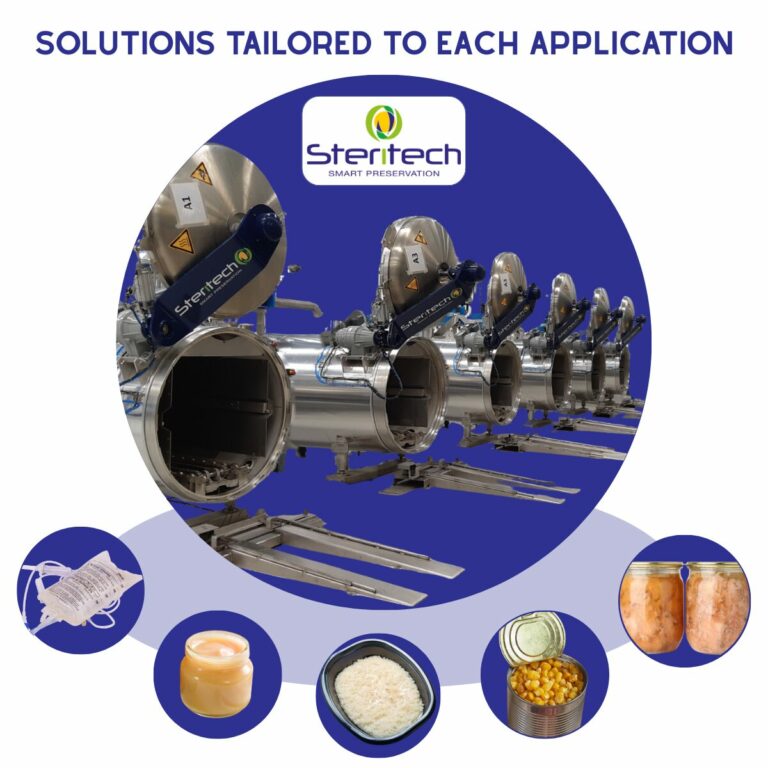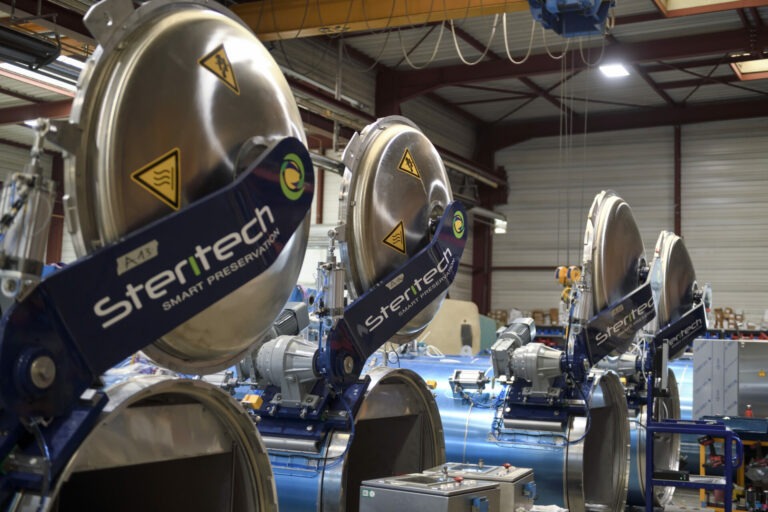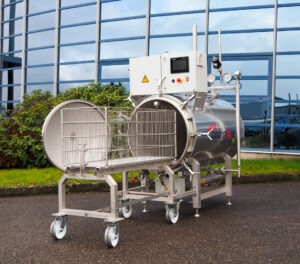
Samedi 05.11.22
Conseils techniques Notre expertise
Pasteurisation des jus de fruits : comment ça marche ?
Prolonger la durée de conservation des produits de notre alimentation est le leitmotiv de toute l’industrie agroalimentaire. Cette dernière a trouvé une solution sur mesure pour proposer des jus de fruits avec de bonnes qualités nutritionnelles. Après la pasteurisation du lait, celle des jus de fruits se développe. Découvrez tous les détails sur le process de pasteurisation des jus de fruits. Cette mesure exige qualité de fabrication, contrôle et respect du goût du fruit dans sa version naturelle.
Quels jus de fruits sont éligibles à la pasteurisation ?
Dans l’industrie agroalimentaire, tous les types de fruits et légumes peuvent être éligibles à la pasteurisation. Jus de pommes, de carottes ou d’autres produits peuvent être divisés en deux catégories.
- Les jus liquides : ils renferment seulement des produits à base de fruits ou de légumes naturels obtenus par pressage mécanique.
- Les nectars : la part de jus dans un nectar se situe entre 25 et 99 %. Du sucre et de l’eau sont ajoutés à la purée de fruit avec une faible quantité de jus. Notez que le nectar apporte plus de fibres que les jus.
Les deux process de pasteurisation
Il existe deux types de process de pasteurisation pour les jus de fruits :
- le process continu de pasteurisation, suivi d’un conditionnement aseptique ;
- la pasteurisation après conditionnement par passage en autoclave ou tunnel de pasteurisation.
Cependant, quel que soit le process utilisé, le choix des produits, la préparation des aliments et leur pression à froid sont des phases identiques.
Choix de produits de qualité pour la pasteurisation
La plupart des fruits et légumes sont éligibles au process de pasteurisation. Qu’il s’agisse de pommes ou d’un autre fruit, le produit devra être mûr et sain. La qualité des produits est primordiale pour obtenir un bon jus. Les jus de fruits devront être stockés dans un contenant adapté, comme la bouteille en verre, quel que soit son diamètre.
Préparation des aliments par nettoyage à l’eau ou solutions hygiéniques
Les fruits seront nettoyés et brossés sous l’eau. Le lavage des fruits doit être soigneux pour limiter la contamination. Dans le process continu de pasteurisation, des solutions hygiéniques seront utilisées pour le lavage du pasteurisateur, suivi d’un rinçage à l’eau.
Pression à froid des fruits pour l’extraction du jus
Les fruits et légumes subiront une pression à froid pour conserver la qualité nutritionnelle des produits. Il est possible d’utiliser un pressoir en inox avec un tube acier qui récupère le jus liquide des fruits pressés.
Les détails du process continu de pasteurisation
Voici les détails des différentes étapes qui constituent la pasteurisation par process continu. Elle concerne les produits au pH inférieur à 4,5. De la montée en température des produits au conditionnement des jus de fruits, on vous dit tout sur cette mesure.
Montée en température du jus de fruits dans le pasteurisateur
Le traitement thermique de la pasteurisation vise à éliminer les moisissures et levures naturellement présentes dans les jus de fruits. Il inactive également les micro-organismes pathogènes. La température de 75 °C doit être atteinte. La montée en température peut s’effectuer de deux manières différentes.
- Avec un échangeur de chaleur : la source d’énergie pourra être le gaz ou l’électricité.
- Avec une sonde de type thermoplongeur intégré. La sonde est plongée dans le jus de fruits et monte progressivement en température.
Remplissage et conditionnement du jus de fruits
Une fois le traitement en température effectué, le remplissage des bouteilles peut démarrer. Les bouteilles doivent être chauffées à une température de 50 °C minimum avant de commencer le remplissage. Le conditionnement doit s’effectuer avec une température du jus de fruits qui ne doit pas descendre sous 70 °C. Il est possible d’utiliser un tube de soutirage. La fermeture des bouteilles doit s’effectuer sous vide d’air.
Contrôle et conservation des aliments après pasteurisation
Après la pasteurisation, les bouteilles de jus de fruits doivent être refroidies. Les bouteilles de jus seront stockées dans un lieu froid et sec. Le mode de conservation est fonction du produit. S’il est suffisamment acide et pasteurisé : il peut se garder à température ambiante.
Le process de pasteurisation par passage en autoclave
Par opposition au process continu de pasteurisation, la pasteurisation peut avoir lieu dans un autoclave. Elle concerne les produits au pH inférieur à 4,5.
Montée en température du jus de fruits dans l’autoclave
Elle s’effectue conformément au programme de régulation en température de l’autoclave. Des tunnels de pasteurisation et des autoclaves permettent de pasteuriser les jus dans leurs contenants. Il est nécessaire de respecter les différentes phases de fonctionnement de l’autoclave.
- Purge (pour l’autoclave à process vapeur) : elle permet de faire sortir l’air qui entraîne une mauvaise répartition de la chaleur dans l’autoclave.
- Chauffe : elle permet la montée en température de l’autoclave.
- Phase de maintien à la température de pasteurisation ou phase de cuisson. C’est la phase la plus importante et la plus critique du traitement thermique. Le respect du couple temps/température est obligatoire.
- Refroidissement : il permet de diminuer la température de l’autoclave et des produits. Le début de la phase de refroidissement est critique. Le choc thermique peut détériorer les emballages.
Remplissage et conditionnement du jus de fruits
Cette étape n’existe pas avec un autoclave, car les contenants sont pasteurisés en même temps que le contenu, donc directement dans l’emballage.
Contrôle et conservation des aliments après pasteurisation
Étant donné que le produit dispose d’un pH inférieur à 4,5, il peut se garder à température ambiante.
Pourquoi recourir à la pasteurisation des jus de fruits ?
La pasteurisation permet principalement d’allonger la durée de vie des produits et d’assurer leur qualité microbiologique, bien qu’elle ne permette pas d’obtenir un concentré de vitamines. En effet, la possibilité d’assurer un concentré en vitamines dépend du temps entre la cueillette des fruits et légumes et le moment de traitement. Plus le temps est court, plus le taux de vitamines est important. Détaillons un peu toutes les raisons en faveur de ce process de fabrication.
Prolonger la durée de conservation des fruits
La pasteurisation permet aux fruits et aux légumes d’être rendus propres à la consommation tout en conservant au mieux leurs qualités nutritionnelles. Les vitamines sont préservées, et cela pendant une durée de conservation indiquée sur le conditionnement. La durée de vie des fruits et légumes est ainsi prolongée et leurs propriétés organoleptiques sont également conservées.
La pasteurisation des fruits pour éviter la stérilisation
La majorité des fruits étant acide (pH inférieur à 4,5), il n’est pas nécessaire d’utiliser la stérilisation. La pasteurisation est donc pour eux le process le mieux adapté à une durée de conservation allongée.
La pasteurisation pour la conservation des qualités nutritionnelles et gustatives
Le process de pasteurisation permet de maintenir les propriétés des fruits, ce qui les rend attrayants et agréables pour les consommateurs. En conséquence, le goût et l’apparence sont conservés après le process, ainsi que la majorité des vitamines.
Vous souhaitez investir dans un pasteurisateur ou dans un autre matériel pour pasteuriser vos jus de fruits ? Faites appel à l’expérience de Steritech en matière de pasteurisation. Contactez-nous pour obtenir des détails sur les différentes solutions disponibles pour la conservation de vos produits d’alimentation.
D'autres actualités de STERITECH


Fermeture hivernale 2025

